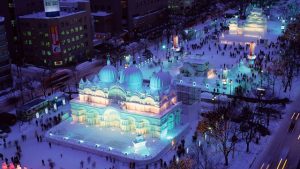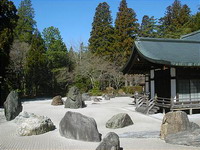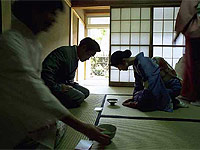comparing spring
TOP-4 PLACES WHERE IT IS TO GO FOR WINTER (part 2)
 As the festival developed, in addition to creating snow sculptures, other types of entertainment were added: concerts, food stalls, art exhibitions and ice-skating, cheesecake and snowmobile platforms.
As the festival developed, in addition to creating snow sculptures, other types of entertainment were added: concerts, food stalls, art exhibitions and ice-skating, cheesecake and snowmobile platforms.
If you go to Sapporo for a few days, be sure to take a stroll through the Odori park, which is the main venue of the snow festival, climb to the observation deck on Hitsujigaoka Hill, which offers a magnificent view of the city. There is a statue of William S. Clark, the first vice director of the Sapporo Agricultural School (now Hokkaido University).
We also recommend visiting the Sapporo Clock Tower, built in 1878, and the Nijo Fish Market, which occupies an entire quarter of the city. There you can taste the sea of delicacies. Continue reading
Canons of awakening (part 1)
 Despite the rather mild winters, with the exception of the northern island of Hokkaido, the onset of spring in Japan is expected throughout the country. In addition to the usual hormonal process that takes place in the body of every person at the time of the awakening of nature, psychological metamorphosis also occurs in the spring with the Japanese. And the reason for this is the millennial philosophical traditions and religious practices.
Despite the rather mild winters, with the exception of the northern island of Hokkaido, the onset of spring in Japan is expected throughout the country. In addition to the usual hormonal process that takes place in the body of every person at the time of the awakening of nature, psychological metamorphosis also occurs in the spring with the Japanese. And the reason for this is the millennial philosophical traditions and religious practices.
If it were possible to draw an analogy between the seasons and the estates of ancient Japan, I would probably liken summer to hardworking peasants and craftsmen, autumn to sad romantic samurai, leave winter to greedy merchants, and compare the colorful soft spring with a refined palace aristocracy. Continue reading




